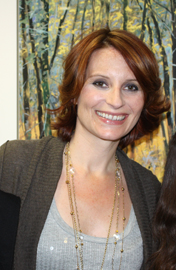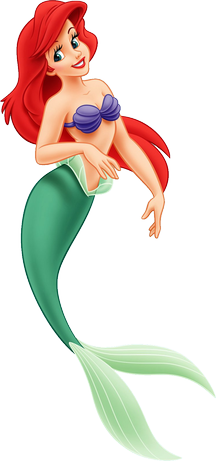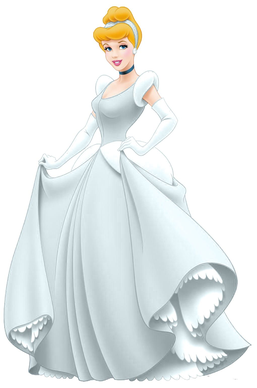
"Cinderella", or "The Little Glass Slipper", is a folk tale with thousands of variants throughout the world. The protagonist is a young woman living in forsaken circumstances that are suddenly changed to remarkable fortune, with her ascension to the throne via marriage. The story of Rhodopis, recounted by the Greek geographer Strabo sometime between 7 BC and AD 23, about a Greek slave girl who marries the king of Egypt, is usually considered to be the earliest known variant of the Cinderella story.

Cinderella is a 1950 American animated musical fantasy film produced by Walt Disney Productions and released by RKO Radio Pictures. Based on Charles Perrault's 1697 fairy tale of the same title, it is the 12th Disney animated feature film. The film was directed by Wilfred Jackson, Hamilton Luske, and Clyde Geronimi. It features the voices of Ilene Woods, Eleanor Audley, Verna Felton, Rhoda Williams, James MacDonald, Luis van Rooten, and Don Barclay.

Prince Charming is a fairy tale stock character who comes to the rescue of a damsel in distress and must engage in a quest to liberate her from an evil spell. This classification suits most heroes of a number of traditional folk tales, including "Snow White", "Sleeping Beauty", and "Cinderella", even if in the original story they were given another name, or no name at all.

Cinderella Castle is a fairy tale castle at the center of two Disney theme parks: the Magic Kingdom at Walt Disney World, and Tokyo Disneyland at the Tokyo Disney Resort. Based on Cinderella's fairy tale castle from the 1950 film, both serve as the symbol and flagship attraction for their respective theme parks. Along with Sleeping Beauty Castle, the Castle is a main symbol of The Walt Disney Company.

Sleeping Beauty Castle is a fairy tale castle at the center of Disneyland and formerly at Hong Kong Disneyland. It is based on the late 19th century Neuschwanstein Castle in Bavaria, Germany. It appeared in the Walt Disney Pictures logos from 1985 to 2006 before being merged with Cinderella Castle, both familiar symbols of The Walt Disney Company. The version at Disneyland is the only Disney castle whose construction was overseen by Walt Disney.

Meggin Patricia Cabot is an American novelist. She has written and published over 50 novels of young adult and adult fiction and is best known for her young adult series Princess Diaries, which was later adapted by Walt Disney Pictures into two feature films. Cabot has been the recipient of numerous book awards, including the New York Public Library Books for the Teen Age, the American Library Association Quick Pick for Reluctant Readers, the Tennessee Volunteer State TASL Book Award, the Book Sense Pick, the Evergreen Young Adult Book Award, the IRA/CBC Young Adult Choice, and many others. She has also had number-one New York Times bestsellers, and more than 25 million copies of her books are in print across the world.

Children's clothing or kids' clothing is clothing for children who have not yet grown to full height. Children's clothing is often more casual than adult clothing, fit for play and rest.

Disney Princess, also called the Princess Line, is a media franchise and toy line owned by the Walt Disney Company. Created by Disney Consumer Products chairman Andy Mooney, the franchise features a lineup of female protagonists who have appeared in various Disney franchises.

Ariel is a fictional character in Walt Disney Pictures' 28th animated feature film The Little Mermaid (1989). Ariel is voiced by Jodi Benson in all official animated appearances and merchandise. The fourth Disney Princess, Ariel is the seventh-born daughter of King Triton and Queen Athena of an underwater kingdom of merfolk called Atlantica. She is often rebellious, and in the first film, she longs to be a part of the human world. She marries Prince Eric, whom she rescued from a shipwreck, and together they have a daughter, Melody. She is the first Disney Princess to be developed during the Disney Renaissance.
Club Libby Lu was an experiential/experience-based retailer for young girls ages 4 to 12. Founded by Mary Drolet, a former executive at Claire's and Montgomery Ward, in August 2000, the store chain employed 98 stores in 28 states in the United States before closing in 2009. The stores were named after founder Mary Drolet's childhood imaginary friend.
The Princess Diaries is a series of epistolary young adult novels written by Meg Cabot, and is also the title of the first volume, published in 2000. The series spent 48 weeks on the New York Times Children's Series Best Sellers List. The series revolves around Amelia 'Mia' Thermopolis, a teenager in New York who discovers that she is the princess of a small European principality called Genovia. The series follows Mia's life throughout high school in the 2000s and juggling regular teenage life with being a royal princess. The books are noted for containing many popular culture references from the 2000s that influence some of the plot.

Esmeralda, born Agnès, is a fictional character in Victor Hugo's 1831 novel The Hunchback of Notre-Dame. She is a French Roma girl. She constantly attracts men with her seductive dances, and is rarely seen without her clever goat Djali. She is around 16 years old and has a kind and generous heart.

Peggy Orenstein is the author of the New York Times bestsellersBoys & Sex, Girls & Sex,Cinderella Ate My Daughter and Waiting for Daisy, as well as Don’t Call Me Princess, Flux, and the classic Schoolgirls. Her TED talk has been viewed over 5.5 million times.

Cinderella is a fictional character who appears in Walt Disney Productions' 12th animated feature film Cinderella (1950). In the original film, Cinderella is voiced by American singer and actress Ilene Woods. For the sequels and subsequent film and television appearances, Woods was replaced by American actresses Jennifer Hale and Tami Tappan, who provide the character's speaking and singing voices.

Snow White is a fictional character and a main character from Walt Disney Productions' first animated feature film Snow White and the Seven Dwarfs (1937). She was originally voiced by Adriana Caselotti. The character of Snow White was derived from a fairy tale known from many countries in Europe with the best-known version being the 1812 tale collected by the Brothers Grimm.

Rapunzel is a fictional character who appears in Walt Disney Animation Studios' 50th animated feature film Tangled (2010). Voiced by American actress and singer Mandy Moore, Rapunzel is a young princess kept unaware of her royal heritage by a vain old woman named Mother Gothel, who raises her in a secluded tower to exploit her hair's healing abilities to remain young and beautiful forever.

Girls' toys and games are toys and games specifically targeted at girls by the toy industry. They may be traditionally associated either exclusively or primarily with girls by adults and used by girls as an expression of identity. One commentator have argued that the market for girl's toys and games is more challenging than that for boys' toys and games.
In 2011, the average number of televisions per household in the United States was 2.5 with 31% of Americans owning four or more televisions. Research shows that the average American watches over 4 hours of television each day. Leading television networks reach approximately 60% of television viewers in the United States per week on average. A study conducted in 2005 by the Kaiser Family Foundation determined that eight- to eighteen-year-olds spend on average six and a half hours a day with media in general. American teenagers alone spend 11.2 hours watching television a week according to another market research study conducted by Teen Research Unlimited. They also found that these teens listen to FM radio 10.1 hours per week, spend 3.1 hours playing video games per week, and surf online for a total of 16.7 hours per week. MTV is the favored television channel to watch among both boys and girls in America, averaging over six hours a week viewing it. Research also shows that on any day a teenager is exposed to over 200 cable television networks, 5,500 magazines, 10,500 radio stations, over 30 million websites, and over 122,000 recently published books. Multiple forms of media can be seen throughout society in almost every facet.
Cinderella is a Disney franchise that commenced in 1950 with the theatrical release of the 1950 film Cinderella. The series' protagonist is Cinderella, who was based on the character of the same name from the Cinderella fairy tale. The Disney film's character was originally voiced by American singer and actress Ilene Woods.
Rebecca Hains is a communication and media studies scholar and author. Hains is a frequently quoted expert on the subject of children's media culture and marketing, which she studies from a feminist media studies and critical/cultural studies perspective. She is a professor in the Media and Communication Department at Salem State University in Salem, Massachusetts, where she has also served as department chair and a faculty fellow in diversity, equity and inclusion.















